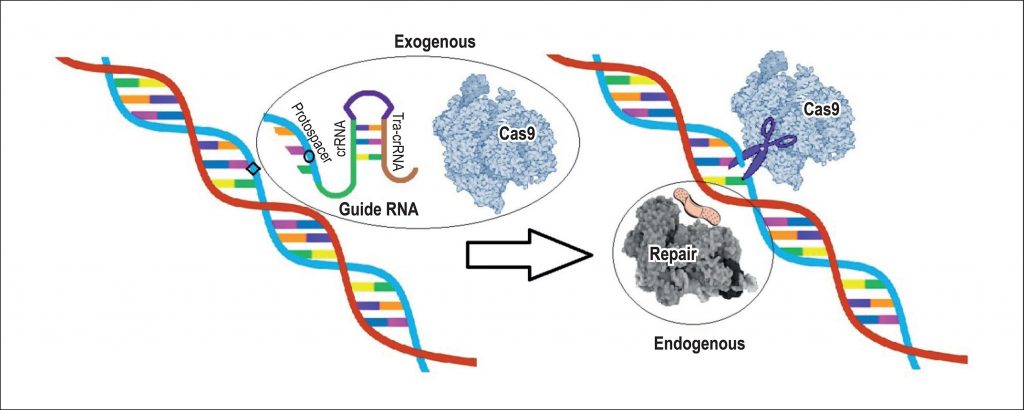Arq. Bras. Cardiol. 2017; 108(1): 81-83
The CRISPR/Cas9 System and the Possibility of Genomic Edition for Cardiology
DOI: 10.5935/abc.20160200
Introduction
Cardiovascular diseases (CVD) and their associated pathologies are among the greatest causes of morbidity and mortality, entailing approximately 17.3 deaths a year. This class of pathology as a whole has a multi-factor etiology. Its possible prognoses lead to public health issues, with its incidence being related to behavioral, metabolic and genetic risk factors. In spite of the fact that the treatments established for the CVDs and their possible prognoses decrease the rhythm of progression of the illness, the need to develop therapeutic approaches able to reverse the pathology and its complications is growing.
The progresses in the fields of molecular and cellular biology have allowed the elucidation of molecular pathways and genetic causes involved in the establishment and progression of the CVDs, outlining a new viewpoint with regard to the prevention, treatment and possible outcomes of this pathological class. Recent discoveries, both experimental and those obtained by means of bioinformatics tools, regarding the molecular bases of cardiovascular dysfunctions, have been pointing to considerable therapeutic targets. However, most of these targets cannot be pharmacologically manipulated, which makes them potential candidates for genic therapy, such as the factors involved, for example, in angiogenesis, apoptosis and endothelial dysfunction. Within such context, gene manipulation may help suppress genetic factors connected to the incidence of the CVDs, as well as to mitigate the clinical complications caused by ischemic and occlusive events. Thus, the development and improvement of genome edition tools allow the creation of therapies focused in the genetic risk factors to cardiovascular damage and fundamental morphophysiological issues caused by the CVDs. In such context, the system formed by clustered regularly interspaced short palindromic repeats (CRISPR), and its CRISPR associated protein-9 (Cas9), stands out due to how easy it is to use it, its high specificity, easy in vitro and in vivo manipulation, in addition to the possibility of simultaneously editing multiple targets. Given the genomic complexity that intervenes in the CVDs, we shall indicate herein certain possibilities of applying the CRISPR/Cas9 tool in Cardiology.
[…]
1,264

